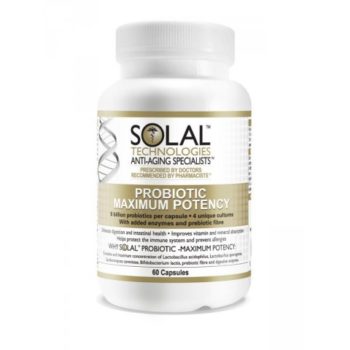Want a flatter tum? Maybe it’s not weight loss you need… millions of women unnecessarily suffer from tight waistbands because of bloating and poor digestion. Sound familiar?
Try the low fodmap diet, which claims to banish bloating and indigestion.
Bloating could also be linked to poor gut health. Find out more here…
What is the fodmap diet plan?
The name might sound like a mouthful but the fodmap diet is really simple to follow, and the good news is, it’s been clinically proven to help irritable bowel syndrome (IBS) sufferers, as well as all of us who struggle with bloating and indigestion.
The diet, which was first devised by scientists at the Monash University in Melbourne, is simply an acronym which stands for a host of short-chain carbohydrates in foods that are poorly absorbed by the body. As a result, they can end up fermenting in the small intestine, causing cramps; gas and bowel-habit changes.
How long should you be on the low fodmap diet?
Because the low fodmap diet is an elimination diet and is designed to sort out a specific ailment, it’s not something you should stick to forever as it’s not a long-term weight loss or weight management plan (although many people do report losing weight on this diet and just feeling good).
The key with this plan is to remove fodmaps from your diet as much as possible for about eight weeks. This will give your digestive system the chance it needs to recover and go back to normal. Then, you will need to gradually reintroduce fodmaps to see if they still cause problems.
Every person is different so you’ll need to figure out how much of a particular food you can tolerate. For instance, a small portion of chickpeas might be okay for your digestive system, but a salad full of them will cause you to feel bloated.
Which foods are high in fodmaps?
You can’t eat foods such as;
Wheat and rye; apples and pears; onions, leeks, garlic, cauliflower and mushrooms; dairy and soya milk, and some types of cream cheese.
You can eat foods such as;
Gluten-free bread, rolled oats, brown rice and rice noodles, wheat-free products, potatoes; berries and bananas; green tops of spring onions, spinach, carrots, tomatoes; almond milk, lactose-free yoghurt, and some types of Cheddar cheese.
Some of the “Allowed” or “not allowed” foods might sound confusing, but remember this diet isn’t solely about weight loss. Yes, sure your waist and tummy will look trimmer when you’re no longer bloated, but the diet doesn’t focus on low-fat foods or high protein foods etc. which is why you might be encouraged to eat Cheddar cheese (because it doesn’t contain fodmaps) but you might need to avoid veggies like broccoli or lentils or pulses.
If you’d like a full low down of the foods you can and can’t eat on a fodmap diet, read The Complete Low-FODMAP Diet (Experiment) by Dr Sue Shepherd and Dr Peter Gibson. You can also click here to find out more.
What fruits and veggies can you eat?
The aim is to cut out “fermentable” fruit and veggies that can cause bloating. Still aim for five a day, but go for choices that are easier to digest.
Mediterranean veg such as aubergines, courgettes, tomatoes and peppers are fine – but hold the onions and garlic. Spinach, carrots and potatoes are all great, but steer clear of broccoli, sprouts, cabbage, cauliflower and leeks. With fruit, stick to melons, berries (not blackberries), soft fruits (not peaches), and bananas.
It’s also worth avoiding pulses like beans and lentils for a while, too – they contain a type of carbohydrate that many struggle to digest.
And grains?
Steer clear of wheat as it can also be a problem for some, so go for spelt bread or a gluten-free option such as Woolworths Gluten Free Bread for a while to see if it helps. Try grains like oats, quinoa, polenta and rice. Buckwheat is fine too, as it’s a fruit seed, and doesn’t contain gluten.
Here are more ways to beat the bloat for good
Here are a few more tips you might want to try in addition to following the low fodmap diet:
Stay regular
Eating regularly ensures that your system works smoothly and prevents bloating. Stick to three meals a day and aim to drink two litres of water daily.
Keep a food and symptom diary
This is very helpful if bloating is an issue. Tracking what you eat and do daily may highlight trigger foods, or you may find that stress, alcohol or fatty foods are a problem too.
Try to steer clear of fizzy drinks
You’ll probably notice that your bloating and constipation improve. Cider, beer and fizzy drink mixers are the biggest culprits due to the gas they contain. Some people find that wine can cause bloating and reddening of the face, too.
Here more reasons why you should consider cutting out fizzy, diet drinks for good.
Try a supplement
If your gut bacteria is out of sync and you have gas build-up, try a good-quality probiotic which is also great for the immune system.

SOLAL Probiotic Maximum Potency, R324, Fresh Earth.
Just a note: The low fodmap diet is designed purely to help your digestive system. You shouldn’t follow the eating plan for more than eight weeks without consulting with a dietician or nutritionist. And if you are concerned for any reason, consult your GP.
DISCLAIMER: Before starting any diet, you should speak to your doctor. You must not rely on the information on this website/newsletter as an alternative to medical advice from your doctor or other professional healthcare provider.

